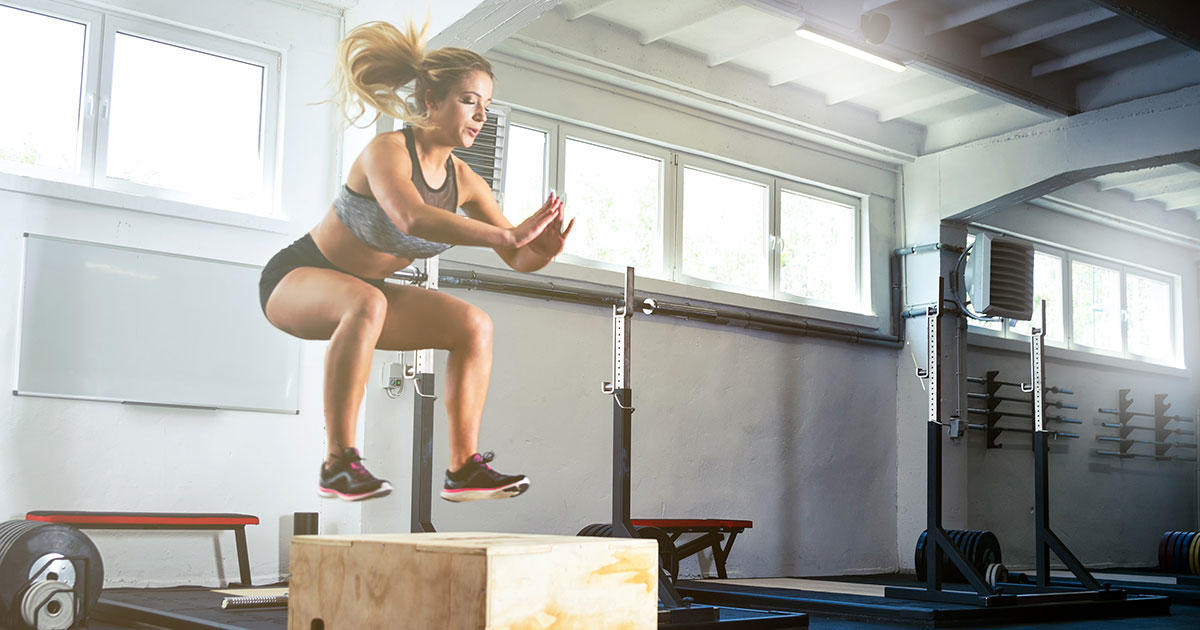5 Tips to Improve Your Box Jump Skills
When training for power and explosiveness, one of the easiest ways is to train box jumps.
Power is important to everyone, not just athletes. By definition, power is force multiplies by velocity — or basically, how quick you apply force to something.
Aging tends to deteriorate our power faster than our strength and endurance, so training for power can keep you spry and athletic.
Box jumps provide a lot of benefits when done properly, or risky when done incorrectly. Seriously, go watch box jump fails on YouTube.
So let’s go over five tips to improve your box jump skills — even if you’ve never done them.
Better Box Jumps
1.) Learn How to Land
Landing is at the end of a box jump, but it can be one of the most important.
Most fails you see on YouTube occur when landing on the box. Your body has to absorb the impact of the landing, which isn’t an easy task.
Here are a few drills you can implement to optimize your landing mechanics:
Hip Hinge
The hip hinge is used in many exercises including squats, deadlifts, hip thrusts, and kettlebell swings. Learning to hip hinge teaches you how to load your posterior chain, getting the most power out of your glutes and hamstrings.
When done properly, you won’t use your lower back or knees to move the weight. This is why it is important to hip hinge when we are absorbing the landing force.
Snapdown
When we jump, there are a lot of things happening at once. While it looks like you are supposed to land in a deep squat position in a box jump, you are supposed to land with a hip hinge. Snapdowns help teach you how to land and absorb the force.
To do them, reach your arms overhead and hop up, quickly dropping into a hip hinge position. Swing your arms down like a skier, and stomp your feet like you are trying to pop balloons under your feet.
2.) Jump and Land in the Same Position
Now that you’re practicing the proper way to land, it’s time to apply the same thing to your takeoff. While squats build plenty of strength, you do not go into a deep squat position to start your jump. This movement is too exaggerated for jumping, but hip hinging isn’t.
Drop into the same snapdown position you’ve been practicing, keeping your hips above your knees, and making sure your knees do not cave in.
3.) Start with a Low Box
As cool as it is seeing someone jump a 50-inch box jump, resist the urge to try that for now. Most plyo box sets will have a box as low as 6 inches. This doesn’t sound like much, but it’s great for novices who’ve never done a box jump.
A simple rule is if you can’t stick the landing in the snapdown position, your box is too high. If you have to land in a deep squat position, leave your ego at the door and get a lower box. When progressing, do not progress to a higher box until you can land a set of 5 perfect box jumps.
4.) Use a Step Down
Jumping and landing on the box puts a lot of force on your knees and ankles. Jumping down from the box adds more opportunities for you to roll an ankle, so use a step down box instead of jumping down.
If you’ve worked your way up to an 18-inch box, try putting a 12-inch box beside it for you to step down safely. The benefits of this exercise come from jumping up, so save your body the wear and tear.
5.) Don’t Do High Reps
A box jump is a highly coordinated exercise. Adding high reps and fatigue into the mix just isn’t safe.
Save your box jumps to produce maximal power — limit yourself to three to five reps per set. More importantly, rest at least 60 to 90 seconds between each set so you can be fully recovered.
Remember that you are building power, so if you are dead set on a jumping exercise for cardio, try jumping rope or burpees.
Wrapping It Up
Applying maximal force in any exercise adds intensity and forces your body to adapt.
Build explosive power with box jumps, utilize these tips, and make progress towards your fitness goals.





